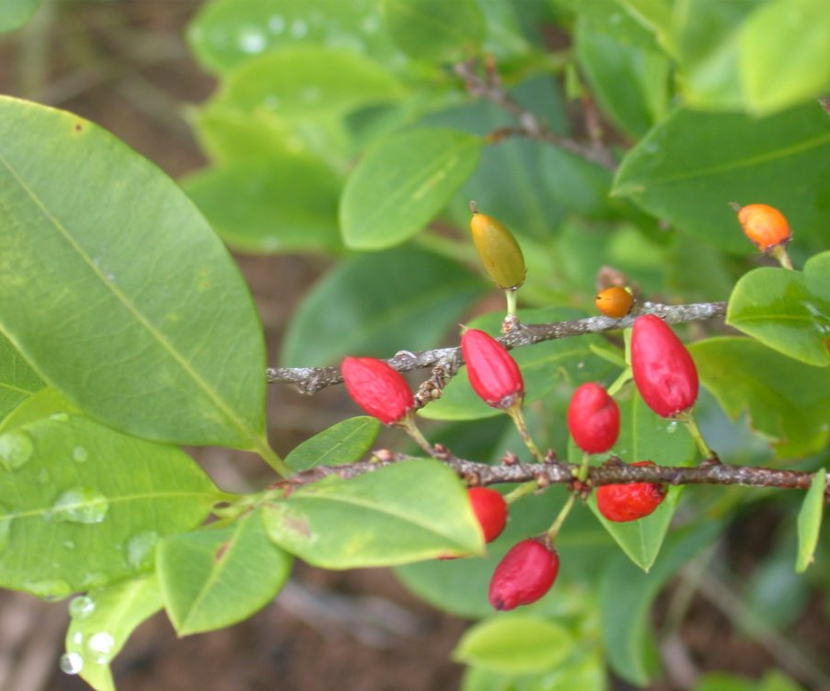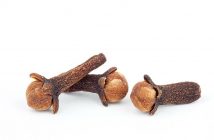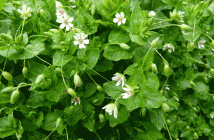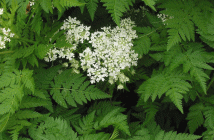 I first became acquainted with this most remarkable plant many years ago, while traveling in Bolivia, South America, in the beautiful valleys of the Cordilleras. The Coca is a bush which rarely attains six feet in height, and does not often exceed three. Its foliage is of a bright green, its flowers white, and its fruit small and red. When the plants are just about eighteen inches high they are transplanted from the seed-beds into fields called cocales. The ripe leaves are gathered with the fingers. They are dried by spreading them in the sun, sometimes on woollen cloths. The operation requires great care, for the plant must be protected from all dampness, which changes its color, and thus diminishes its value. It is then packed in bags, weighing from fifty to one hundred and fifty pounds, which are often transported to great distances. In the Vice-royalty of Lima, in the latter part of the last century, CASTELNAU represents the consumption of the leaf at three and a half millions of pounds, and worth one million and a quarter of Spanish dollars, while at the same time the total consumption in Peru was two and a half millions of dollars. The importance of the Coca trade, however, is diminishing as the Red Man disappears. The Indians mix the Coca with a small quantity of lime, and constantly carry a small bag of it on all their excursions. They take it from three to six times a day. Dr. GECHUDI (Travels in Peru, page 453) mentions an indian of sixty-two years of age, who was employed by him, and though at very hard work for five days, took no other nourishment, and rested but two hours of the night. Immediately, or soon after this, he accomplished a journey of one hundred miles in two days, and said that he was ready to do the same thing again if they would give him a new supply of Coca. CASTELNAU says he himself knew of instances as extraordinary. In the time of the Incas the Coca was regarded as sacred.
I first became acquainted with this most remarkable plant many years ago, while traveling in Bolivia, South America, in the beautiful valleys of the Cordilleras. The Coca is a bush which rarely attains six feet in height, and does not often exceed three. Its foliage is of a bright green, its flowers white, and its fruit small and red. When the plants are just about eighteen inches high they are transplanted from the seed-beds into fields called cocales. The ripe leaves are gathered with the fingers. They are dried by spreading them in the sun, sometimes on woollen cloths. The operation requires great care, for the plant must be protected from all dampness, which changes its color, and thus diminishes its value. It is then packed in bags, weighing from fifty to one hundred and fifty pounds, which are often transported to great distances. In the Vice-royalty of Lima, in the latter part of the last century, CASTELNAU represents the consumption of the leaf at three and a half millions of pounds, and worth one million and a quarter of Spanish dollars, while at the same time the total consumption in Peru was two and a half millions of dollars. The importance of the Coca trade, however, is diminishing as the Red Man disappears. The Indians mix the Coca with a small quantity of lime, and constantly carry a small bag of it on all their excursions. They take it from three to six times a day. Dr. GECHUDI (Travels in Peru, page 453) mentions an indian of sixty-two years of age, who was employed by him, and though at very hard work for five days, took no other nourishment, and rested but two hours of the night. Immediately, or soon after this, he accomplished a journey of one hundred miles in two days, and said that he was ready to do the same thing again if they would give him a new supply of Coca. CASTELNAU says he himself knew of instances as extraordinary. In the time of the Incas the Coca was regarded as sacred.
Properties and Uses. — Its physiological actions are as follows:
1. It stimulates the stomach and promotes digestion.
2. In large doses it augments animal heat and accelerates the pulse and respiration.
3. It induces slight constipation.
4. In moderate doses, from one to four drachms, it stimulates the nervous system, so as to render it more tolerant of muscular fatigue.
5. In larger doses it gives rise to hallucinations and true delirium.
6. Its most precious property is that of inducing the most pleasant visions (“phantamagoria”) without any subsequent depression of the nervous energies.
7. Probably it diminishes some of the secretions.
The Coca has doubtless many other medical properties of a high order, and deserves further investigation.
It stimulates powerfully the digestive functions, while at the same time it exercises a calmative influence over the mucous membranes of the stomach and bowels. In this double action upon the stomach–stimulant and calmative–it resembles Columbo.
It is anti-spasmodic, and is of great service in many nervous disorders, and particularly in spermatorrhoea and all debilities of the generative organs.
I make a pill from the solid extract of Coca, combined with lime and valuable Herbal remedial agents, which I call the Napoleon Herb Pill, owing to its powerful tonic properties. It is designed to cure all forms of debility afflicting either sex. Its powers are promptly manifested in cases of sexual debility, whether from self-produced causes, long study, severe mental excitement, or general breaking-down of the nervous system from whatever cause. It is equally effectual for the female weakness and debility so universal among women at the present day. These pills are, with explicit directions, put up in sealed bottles. Sent, prepaid by mail, to any address, on receipt of $3.00 for 100 pills. We also use Coca in various forms in our prepared courses of medicine for special cases.
Erythroxylum coca (Coca)
Share.



